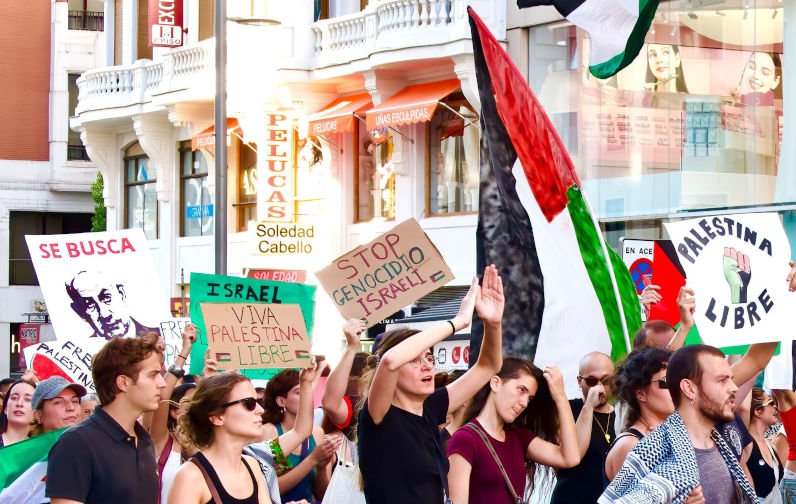What are international protests revealing about Palestine, Israel and public opinion?
October 7, 2025
When I first saw the figures on international protests from October 2023 to September 2025, I was fascinated. I hadn’t realised which countries had been most active and the results surprised me.
It makes sense that Yemen and Morocco feature strongly. With their Muslim populations, there’s a sense of brotherhood and deep connection to Palestine, but what caught my attention was the presence of countries like the US, France, Italy, Spain and Australia in the top ten.
Why are people in such different parts of the world turning out in such large numbers?
Some answers are straightforward. In places like the US, France and Australia, many people have personal or cultural ties to the Middle East.
However, that’s not the whole story.
Many of these protests are not only about religion or family connections. They’re also about values.
Most people are moved by a sense of injustice, by the images and stories of suffering and by the belief that ordinary people have to speak out when governments stay silent.
That’s what makes this data so striking.
In countries with a tradition of protests, where citizens expect to have a voice, turnouts are bigger.
In other countries, where governments are less tolerant of public demonstrations, the numbers are smaller. This is not always the case and doesn’t mean people care less, but it does show that freedom of expression plays a big part in whether protests can happen at all.
It’s also important to remember that protest numbers don’t only reflect democracy or freedom of speech. In some countries, people live under the weight of repression, where even speaking out can mean prison or worse.
However, Gaza has pushed some of these societies beyond their limits. People have still found ways to protest, even at great personal risk. That tells us something powerful – when people feel injustice has gone too far, conscience can break through fear. These protests are not just about who is “allowed” to speak, but about who refuses to stay silent, no matter the cost.
The imbalance is also very important.
Pro-Palestinian protests have far outnumbered pro-Israel ones worldwide.
Even in countries closely allied with Israel, far more people have taken to the streets for Palestine.
This doesn’t mean everyone sees the genocide in the same way, but it does highlight where the emotional energy and moral outrage are concentrated.
Then, there are the countries missing from the lists altogether. This silence speaks just as loudly as the demonstrations.
Are people in those countries indifferent, or are they constrained by fear, restrictions, or apathy?
Every absence must tell us something about the political and cultural climate of a country.
These protests don’t just tell us who supports Palestine or Israel. They also reveal something very deep about each country, about whether citizens feel free to speak, about what values drive them and about what issues move them enough to march, to protest, to take action.
For me, the lesson is very clear, the genocide in Gaza is not only a regional matter. It has become an international question of conscience.
When people from Yemen to Spain, from Morocco to Australia unite in their demand for justice, it shows something really powerful – governments may be more divided on this issue than the very citizens who fund and sustain them.
That matters, that really matters, because while leaders may choose caution, delay, or silence, the people on the streets are showing the world that conscience, that morality, that humanity, that compassion, can’t be ignored.
Governments must listen to their people and people must choose their leaders wisely.
Further reading: 'Remarkable': How Gaza protests unfolded in Australia and around the world
The views expressed in this article may or may not reflect those of Pearls and Irritations.
